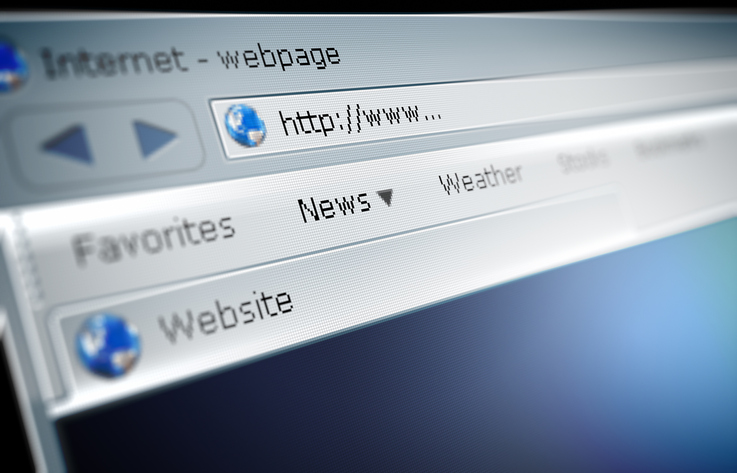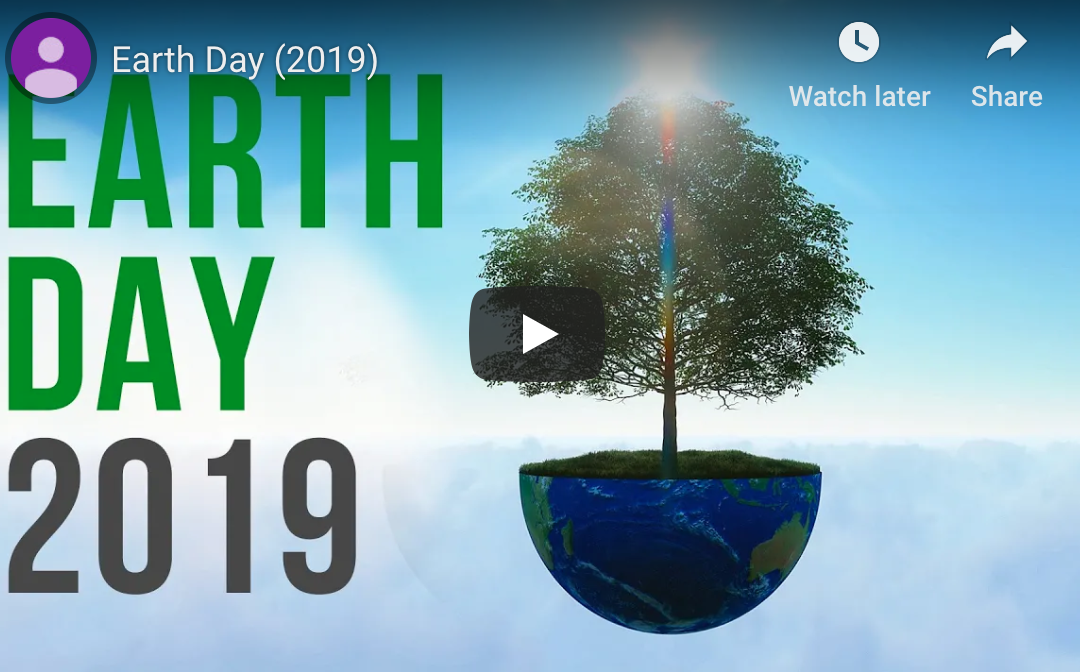
by Felicien | Apr 24, 2019 | Education
April 24th is Administrative Professionals Day, which is an occasion worth celebrating. No office can function without hardworking and dedicated administrative staff, so why not take this as an opportunity to remind them how much you value them?
Treat your administrative staff to a little something special today, and let them know how important they are to everything that your business does.

by Felicien | Apr 23, 2019 | Education
Microsoft’s first version of the Edge browser fell far behind other options, gaining only a 4.4 percent market share compared to Chrome’s 65.5 percent, Internet Explorer’s 9.83 percent, and Firefox’s 9.62 percent. The company went back to the drawing board and created a new Edge that is based on the Chromium engine. Here are a few of the highlights that this new browser has to offer.
Better Compatibility
The original Microsoft Edge, based on EdgeHTML technology, ran into occasional problems with rendering HTML 5 elements. The new version has comparable compatibility to Google Chrome. Even in this early stage, most websites were rendered without any significant problems.
Changing Menus
The dockable pane is getting booted in favor of cascading menus. The options aren’t changing a lot, but the navigation feels more intuitive with this update.
Improved Data Privacy
One sticking point that some people have with Google Chrome is that the company collects a wide range of information about online activities from its users. You can use the latest version of Microsoft Edge to reduce the data that Google collects. Only the time you spend using Google properties such as Gmail get tracked, but your activity outside of that would not go to the search engine giant.
Supports Chrome Extensions
Microsoft Edge Insider Add-on selection has always paled compared to Chrome’s, but that’s not going to be a problem anymore. The new browser makes it straightforward to add Chrome apps, which is a huge upgrade to the user experience. Instead of only having 120 extensions to choose from, you have access to more than one hundred thousand. The Add to Chrome button will also work with Edge.
Synced Tabs
This feature isn’t in the new Edge yet, but you’ll eventually have all of your open tabs synced between your devices that have Edge open. It promotes seamlessly going back and forth between desktops, laptops and mobile devices.
Getting Microsoft Edge
This browser is currently under development so hasn’t reached the shippable stage yet. Microsoft will add more of the user-friendly features as the browser progresses. The early release performs well and comes in a daily and weekly updated version. It has a surprising amount of polish for software that’s relatively early in its development process. You can access the browser through the Microsoft Edge Insider program.
More Default Search Engine Option
Microsoft promoted Bing as the default, and only, search engine for Edge. The Chromium version is adding Google, DuckDuckGo and Yahoo to the roster. This is a welcome change, as having to go directly to the other search engines to use them made the user experience feel clunky.
Microsoft is taking a lot of steps in the right direction with the Edge Chromium version. It addresses many common complaints about Edge, and the disconnection from Google services limits the amount of data being collected. Following its development and seeing whether it can improve its foothold in the browser market will be exciting to watch.

by Felicien | Apr 23, 2019 | Education
The healthcare industry is currently facing a crisis. Hounded by criticism of insufficient access to providers and poor bedside manner, skepticism abounds on the part of patients and their families. But with administrative tasks and paperwork at an all-time high, how can healthcare teams find the time to give their patients the attention and information they need?
Fortunately, digital communications have evolved in parallel, with new means for patient contact—from email through texts, apps through social media—developing with built-in security standards and measures. This wave of digital communications is smart to the potential risks of protected health information (PHI), and strives to be HIPAA-compliant wherever possible.
Ensure patients have all the content they need.
Today’s digital messaging lends itself to customization. Choose from emails, SMS text messages, designing your own app, using existing messaging apps (WhatsApp and its peers), social media, browser pages, and more.
From all of these potential avenues, the choice as to which is most appropriate will be clear based on the demographics of the patient population being served. While elderly patients might not be all over Snapchat, this group might tend towards a specific operating system and platform—e.g. the Apple iPhone—which could shed some light on the ideal communication platform to employ with them.
Formatting the materials to fit the platform being used while maintaining universal accessibility is another key consideration. But as the adoption of digital communication continues to grow and the number of solutions expands, these problems will be incurred less frequently.
Leverage AI for one-on-one attention—while saving clinical time.
The knowledge of which specific channels are preferred by patient populations being served can be used to build solutions that enhance the patient experience. For example, if 90% of patients access the provider’s website, a desktop-friendly chatbot could be a worthwhile investment.
Via advances in natural language processing (NLP), chatbots have been evolving to respond more appropriately to input than ever before. For patients, they reinforce an environment where it is not only safe, but even advisable for individuals to ask questions. These patients and their loved ones can get the answers they need without costing themselves or providers any additional clinical time.
Chatbot responses can be programmed to answer frequently-asked questions, as well as escalate potentially troubling scenarios. They can help handle feedback surveys and check-ins for patients who are post-op or who have chronic conditions. In fact, Gartner estimates that by 2020, 85% of consumer interactions will be managed using automated platforms like chatbots.
The form these AI interactions takes is not strictly limited to the written word. This flexibility in format allows accommodations to be made for any disability. People who have trouble seeing can use voice-activated platforms akin to Amazon’s Alexa device, so they can then hear the answers to their questions and use their voices to navigate through their options.
Sustain easy, consistent process automation.
Being able to program chatbots or other response-generating platforms to automatically provide content based on contextual cues ensures that information is delivered where it’s needed, and to resolve the questions patients, caregivers, and family members might have. Automation allows this to happen anywhere; patients are not bound to the clinic in order to resolve their queries, but rather can access the information they need anywhere—including in the privacy of their own homes.
Why not use these advances in the healthcare space to drive patient accountability, allow consistent communication, but also free up providers for situations where one-on-one attention is critical and does not lend itself to automation? Freeing up providers to intervene during emergencies or counsel patients emerging issues could drastically increase the rate of positive outcomes. Routine follow-ups and visits could be expedited, reducing their burden on clinical staff.
In fact, the use of digital platforms allows for the seamless integration of all of these solutions into patient administrations systems. This is how to render those systems the de facto central hub for patient communication and record-keeping. Using surveys to interact with patients also allows information and feedback to be gathered and automatically recorded to patient charts; everything from ‘bad days’ through missed appointments can be easily accounted for without any additional time spent by office staff.
This is a snapshot of where digital communications are currently, but it will only continue to evolve as the general public continues to incorporate these channels further into their lives. The most critical fact to keep in mind is that digital communication is what the public wants. For example, a recent Healthcare Communications survey in the UK found that 68% of patients surveyed wanted to be able to manage everything about their appointments online.
This might seem like a no-brainer as the number of digital consumes continues to grow with increased adoption. However, the fact that individuals are not becoming “burned out” on tech and digital communications but instead are seeking further avenues to implement it in their lives is significant. This bodes well for future implementations.
Staying ahead of the trends and making sure practices leverage the latest technology and communication will not only make sure patients’ needs are met, but will boost their morale and increase the likelihood that they will comply with provider recommendations.

by Felicien | Apr 23, 2019 | Education
More than ever, today’s CFOs are expected to have a degree of tech savviness. Big data and analytics are tools that are just too powerful to ignore in the CFO suite. If you’re not particularly tech savvy, harnessing the power of these tools to the fullest extent will remain out of reach.
Why You Need to Become the Tech Savvy CFO
It’s crucial to understand just how powerful today’s technology tools are for financial leadership. Whatever the nature of your business and industry, technology can empower you and your staff in the following ways.
Forecasting and Risk
Forecasting has always been a part of the CFO’s role. Forecasting today can be much more accurate, thanks to the rich data that’s available. CFOs must have the skills to understand and interpret that data (or they must employ people who can). Use robust data and analytics to reduce the amount of guesswork in your forecasting.
Risk management is another responsibility under your purview as CFO. Forecasting and risk management are interrelated, of course, and both have traditionally involved a fair bit of prediction and uncertainty. If you’re like most CFOs, you’re a fairly risk-averse person. Reduce the risks of prediction and uncertainty by basing your decision-making on data wherever possible.
Advanced Data Visualization Techniques
All this data that companies now have access to can quickly become overwhelming. Today’s tech savvy CEOs harness the power of advanced data visualization techniques to bring the most important information to the surface. These techniques include making dashboards for interacting with the data and scorecards for presenting it to users at all levels.
Predictive Analytics
In the 1960s, business predictions were often made around a conference table in a smoke-filled room. They were based on some amount of data, but hunches, opinions, and interpersonal power dynamics often played an outsized role.
Today, there’s a better way. Predictive analytics are driven by algorithms and data, not by cigars and opinions. Leverage the power of all the data you’ve collected into predictive analytics. While they are neither perfect nor omniscient, predictive analytics remove human biases from forecasting. This powerful tool can enhance your effectiveness as a CFO.
Adjust in Real Time
The CFO that understands how to use these new tools can be agile, adjusting in real time based on the data that’s coming in. Many marketplaces change rapidly, and a 6-month-old report may no longer ring true. Big data and analytics let CFOs make these quick adjustments as they continually monitor data and adjust their predictions.
Drive Growth
Acting on your analysis of data can often spur on innovation and growth. Creating efficiencies aids in growth, and as you do so you’re likely to discover new business opportunities, such as a hole in the market that your company is suited to fill.
How to Become the Tech Savvy CFO
Having a tech savvy CFO brings many advantages to a company. As a result, being a tech savvy CFO makes you a much more valuable asset. If you’re not there yet, here are a few quick tips for how to get there.
Learn Analytics
Yes, this sounds basic, but if you don’t understand how to use analytics to do the things we’ve talked about, you need to learn. If others in your company already know analytics, leverage your rank. You are the CFO, after all—make it part of their job to teach you. If you’re in a smaller firm that has yet to embrace big data and analytics, it may be time to go get a certification in this area.
Meet Regularly with Experts
Your CIO, if your firm has one, should be well versed in the sorts of technology we’ve discussed today. Meet regularly with your CIO and ask questions. Do the same with other experts in your network. They aren’t the finance people, so they may not readily see how big data and analytics can transform your role. As your understanding grows and you learn to them the right questions, you’re likely to discover breakthroughs together.
Read What They Read
Sites like CIO.com are go-to resources for CIOs, but you can benefit there, too. Not every article will apply to what you’re learning, but many will. Reading sites like these will increase your overall tech comfort level.
Leverage the Data
As your understanding of analytics grows, you can start leveraging that data in real, meaningful ways. It’s easy to get overwhelmed in a deluge of data if you don’t have the tools to parse through it. At the same time, it’s possible to parse the data so finely that you miss valuable conclusions. As your comfort level grows, you’ll improve in leveraging data to the fullest extent.
Educate Your Team
Last, you need to educate your team. As you journey to become a tech-savvy CFO, teach your team what you’re learning so that they can help you win using data and analytics.

by Felicien | Apr 22, 2019 | Education
This year, what will you do to celebrate Earth Day?
The 49th Annual Earth Day is nearly upon us. As always, it’s April 22nd and the perfect day to celebrate this beautiful blue planet we live on.
Let’s learn more about what Earth Day is, where it comes from, and how you can celebrate.
What is Earth Day?
Earth Day is an annual worldwide event, celebrated each year on April 22nd. It was created to raise awareness, support, and appreciation for the earth and environmental protection.
Why was Earth Day started?
The first Earth Day was celebrated on April 22nd, 1970 when the event was founded by U.S. Senator Gaylord Nelson. Originally, the event was focused in America only. Today, however, Earth Day is a worldwide phenomenon and celebrated in over 193 countries.
The Earth Day Network is current keeper and organizer of the environmental movement surrounding Earth Day. Year-round, the organization works to educate and inform the worldwide community about climate change, pollution, endangered species, and other environmental issues.
What can you do to promote and celebrate Earth Day?
We only have one earth! Earth Day reminds us how important it is to preserve and protect it. No matter what environmental practices you’re used to doing on a daily basis, you can always use Earth Day to pay more attention to how you interact with nature and the environment.
Here are three great places to start!
Plant a tree. Help repopulate the planet with trees by planting just one tree on Earth Day. Earth Day Network calls this initiative the Canopy Project, the goal of which is to “conserve, repair, and restore tree cover” throughout the world. Learn more about tree planting on Earth Day (or any day) here.
Go outside! Just going outside for a walk or raking leaves are excellent ways to engage with nature and realize the beauty of our planet. You might also go for a hike, take a bike ride on a shady trail, or enjoy a picnic in the park. If you really want to go the extra mile, consider picking up trash while you’re out and about.
Unplug. Literally and figuratively! Unplugging literally means keeping lights and appliances off as much as possible throughout the day to preserve energy. Unplugging figuratively means taking the day to engage in activities other than those involving screens — preferably those that take place outside in the fresh air.
Lastly, if you own or manage a business, make sure to celebrate Earth Day this year! Businesses can promote widespread awareness of special events like Earth Day and enact real positive change. There are many actions you can take, including promoting the event on social media, motivating your employees to take part in Earth Day activities, and spreading awareness about environmental issues.
Happy Earth Day!




